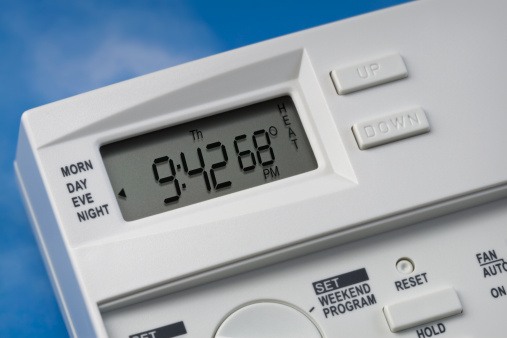 You might call them myths, or you might call them misconceptions. You can even commingle the terms and call them “mythconceptions.”
You might call them myths, or you might call them misconceptions. You can even commingle the terms and call them “mythconceptions.”
By any definition, the response to our recent blog, “Myths About Your Home Heating System Debunked,” was so enthusiastic that we've decided to supply a sequel. Given the time of year, much of our focus here remains on heating. But not to worry: we'll happily pass along some myths related specifically to air conditioning in short order.
Until then, don't feel embarrassed if you've harbored any of these “mythconceptions” about your heating and air conditioning system. They all contain a trace of logic:
Myth: The higher you set your thermostat, the faster it will
warm up your home.
Reality: A furnace that is cranked up to, say, 85 degrees, will not warm up a home any faster than one that is set for 70 degrees. A higher temperature does not mean that your furnace will generate more heat; it means that your furnace will run for a longer period of time – in this case, until the temperature reaches a toasty 85 degrees.
A smart reality: Some of our customers have said that they try to keep an eye on their thermostat and turn it down before it reaches a too-hot temperature. But why run even the small risk of wasting energy you don't need – not to mention wasting your own energy as you run back and forth to the thermostat? If you've been away from home for the weekend and return to a cold home, grab a sweater or a blanket and wait for your home to warm up gradually, as it was designed to do.
Myth: Closing vents and registers is a great way to reduce heating bills. After all, if no one is using a room or entire section of a home, why spend money to send warm air there?
Reality: Homes with forced-air heating systems balance pressure to equally distribute heat. So instead of simply blocking the flow of warm air to a room, a closed vent causes additional pressure to build up in the ductwork. This imbalance creates a cold air return duct to draw in air from cracks in windows and doors while the warm air that's being blocked finds other places to go, such as into the floor cavities. This imbroglio causes your entire heating and air conditioning system to work much harder than it has to.
Smart reality: All this said, closing a vent or two will not create a catastrophic situation. But we'd feel better if we could inspect your home and make a recommendation about closing a register or two, lest you do any long-term damage to your heating and air conditioning system – or your monthly budget.
Myth: Duct tape (also known as “duck tape”) is ideal for sealing leaky or cracked ducts.
Reality: Talk about a misnomer; despite its many useful household applications, duct tape responds poorly to dirt and dust, which flow through ducts constantly. Over time, these entities can cause the adhesive to dry up, wrinkle and fall off. Duct tape also responds poorly to temperature changes.
Smart reality: Use mastic tape on ducts instead; it sticks, seals and insulates much better than duct tape. Alternatively, foil, butyl and other heat-approved tapes that feature the Underwriters Laboratories (UL) logo are effective, too.
Call Experts In Your Home if there's a myth, misconception or “mythconception” related to your heating and air conditioning system that you'd like us to clarify. Our Chico heating and air technicians are here and ready to help.
Do you know what to do if your heating system breaks? Download the free eBook below to learn more.








